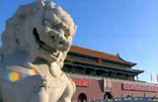Changing tastes of modern Chinese households
Updated: 2015-05-28 07:44
By LAN LAN(China Daily)
|
|||||||||||
My friend Sofia works for a Latin American dairy company that has just started tapping into the Chinese market. She tells me competition is fierce, as more imported dairy produce continues to flood the market.
I've noticed this myself.
At my local grocery store, for years there were just two or three foreign cheese brands sold, but that's now mushroomed to more than 10.
But as well as China's growing taste for dairy, there are other reasons for this rise in foreign products arriving on our shores.
Russia, a massive dairy-loving country itself, has been banning shipments of most agriculture products from the United States, the European Union, Norway, Canada and Australia since last August in response to those countries imposing economic sanctions against it in the wake of the crisis in Ukraine.
Russia was previously Europe's largest importer of dairy products. More than 40 percent of Australia's butter exports by value were sent to Russia in 2013. So as the Russian ban was introduced, many products normally destined for there have had to go elsewhere.
The Middle East was another major dairy market, buying nearly 90 percent of its produce from overseas. But the purchasing power of consumers in that region has been hurt badly by the recent plummeting crude oil prices, and conflict in the area, and many imported products have become too expensive for the average purse.
So companies around the word are now counting on China to take up the slack in global demand, and consumers here have welcomed the growing influx of quality products.
Volumes of imported milk powder, for instance, have increased by 8 percent year-on-year and imported liquid milk has surged by 70 percent in 2014, according to the customs data.
Milk and yogurt are now so much more popular than they were when my parents were buying groceries for me, as are cheese, butter and cream, which have become commonplace on the average Chinese housewife's shopping lists.
Western restaurants have existed in big Chinese cities for decades, but the arrival of more Western-style fast-food restaurant chains have played a huge role in promoting what are becoming very different kinds of eating habits in China.
Kentucky Fried Chicken opened its first Chinese store in 1987. McDonald's and Pizza Hut opened their first outlets in the early 1990s.
Younger Chinese could not get enough of them then, and it's this generation of consumers, used to Western tastes, who have become the modern-day housewives and mothers.
Baking has also become a popular Western import for many of my female friends, although most of us do not have the secret recipes that some Western girls might have been given by their mothers.
So we share pictures of homemade cakes, bread and cookies on mobile social networking sites such as WeChat, and exchange recipes. There are also free or cheap baking classes available, and we love them.
The oven has become a necessity, particularly for those who are mothers themselves, in which we experiment with additive-free bread recipes.
I know one girl who cannot cook any Chinese dishes, but she is great at making desserts and has superb cake-decorating skills.
Is she a good cook? Yes, just not in the traditional way.
This growing passion and enthusiasm for baking has not only spurred the demand for imported dairy products, but also wheat.
Western-style bread and cookies need hard and soft wheat, while most of China's wheat is produced with moderate levels of gluten.
Although China is the world's largest consumer and producer of wheat, demand for high-protein milling wheat is rising, particularly imported from Australia, Canada and the United States.
Imported produce might still be rare in supermarkets in smaller cities, but it is easy to order online and can be sent directly to home.
The world's major food manufacturers are all eyeing the Chinese market, and the country's rising middle class is welcoming their products with open arms, especially those which boast of being produced to high health and environmental standards.
As Chinese consumers gradually develop more sophisticated tastes, demand and consumption of Western foods and ingredients is likely to continue to be a boom industry for many years to come.
Related Stories
Milking a new dairy product 2015-05-18 07:37
Premier, Irish PM tour dairy farm 2015-05-18 05:45
Cheese, pasta makers give small jets shot in the arm 2015-02-13 07:44
Australia's Bega Cheese to sell 18.8 pct Warrnambool stake to Saputo 2014-01-20 15:09
Foreign cheese firms eye big slice of China's market 2012-11-28 10:27
Today's Top News
London stock exchange takes steps to include China A shares
China calls for durable settlement of Kosovo issue
China urges BRICS to unite for promoting multi-lateralism
New way to enjoy movie in Berlin
China plans software guideline to protect data
China issues first white paper on military strategy
China, Chile ink multi-billion-USD currency swap deal
China, Russia vow to boost cooperation
Hot Topics
Lunar probe , China growth forecasts, Emission rules get tougher, China seen through 'colored lens', International board,
Editor's Picks

|

|

|

|

|

|






